全文HTML
--> --> -->在工业生产过程中, 流体常因添加了活性剂、高分子材料或颗粒而表现出不同的非牛顿特性, 包括黏弹性、剪切增稠、屈服应力和剪切变稀等. 牛顿流体液滴撞击固体壁面行为已被****们广泛探讨[4,5]. 然而, 由于非牛顿流体流变学行为的复杂性, 目前有关非牛顿流体液滴撞击固体壁面行为的研究尚少. Jung等[6]与Huh等[7]的研究表明在流体中添加极少量的聚合物材料, 在不明显改变流体的密度, 表面张力和剪切黏度等物性的情况下, 可使流体表现出显著的黏弹性, 抑制液滴撞击固体壁面后的回弹行为. Luu等[8]和Sa?di等[9]通过实验发现对于表现出屈服应力特性的非牛顿流体, 液滴撞击固体壁面后的铺展和回缩行为都受到了抑制. Boyer等[10]指出, 剪切增稠液滴撞击固体壁面后的铺展行为与牛顿流体液滴表现出极大的不同, 在撞击壁面后的初始铺展阶段液滴的变形会突然停止. 对剪切变稀流体液滴撞击固体壁面行为的研究, 主要采用的是实验方法, 关于剪切变稀特性对液滴撞击壁面行为的影响机制尚存在争议. German等[11]研究了幂律流体液滴撞击固体壁面后的铺展直径与液膜厚度的变化, 结果表明剪切变稀特性影响着液滴撞击固体壁面后的动力学行为, 但液滴稠度系数在铺展过程中起主导作用. 然而An等[12,13]对剪切变稀流体液滴撞击不同疏水性壁面的过程研究后指出, 在撞击过程中动态变化的剪切黏度直接影响着液滴的铺展. Andrade等[14]的研究同样指出, 撞击到固体壁面后, 液滴内部动态变化的流场会改变剪切变稀流体液滴的剪切黏度, 直接影响着液滴的动力学行为. Laan等[15]研究了表现出剪切变稀特性的血液液滴撞击壁面的行为, 他们指出相较于无穷剪切黏度, 剪切变稀特性对液滴行为的影响可忽略不计. 刘海龙等[16]将纳米颗粒分散到环氧树脂中配制了表现剪切变稀特性的纳米流体, 研究了纳米颗粒的加入对液滴撞击固体壁面后铺展行为的影响, 他们指出纳米颗粒的加入显著抑制了液滴在壁面上的铺展和回缩行为, 但通过实验难以研究流变学参数对液滴撞击的独立影响.
虽然测量与分析技术的发展已经可以帮助我们通过实验从唯象的角度认知液滴撞击固体壁面这一复杂的物理现象, 但是由于实验条件的局限性, 对流场范围内的一些物理量如速度与压力仍然难以精确测定, 如相界面移动等微观物理现象也难以捕捉. 随着计算机技术和数值计算方法的不断进步, 数值模拟作为一种基本手段, 被众多****用来研究液滴撞击固体壁面行为. 由于气体和液体两相间存在的高黏度与密度比, 处理撞击液滴的相界面移动问题是采用数值模拟方法研究液滴撞击固体壁面行为的难点. 在固定网格上求解相界面移动的方法主要分为两类: 显式求解(界面追踪法)和隐式求解(界面捕捉法). 边界积分法[17]和锋面追踪法[18]是两种典型的界面追踪方法, 界面追踪方法提供的数值精度较高, 但它的适用范围仅限于斯托克斯流动. 与界面追踪方法不同, 界面捕捉法通过求解固定网格上独立的相函数来获得相界面的移动. 目前被****应用较多的界面捕捉方法包括相场法[19]、流体体积法[20]、扩散界面法[21]、格子-玻尔兹曼方法[22]以及水平集法[23]等. 郑志伟等[24]基于耦合水平集法和流体体积法的CLSVOF方法建立了中空液滴撞击固体壁面的数值模型, 研究了撞击速度和壁面浸润性对中空液滴撞击壁面动力学行为和传热特性的影响. 李玉杰等[25]基于格子玻尔兹曼方法模拟了液滴撞击圆柱内壁面的过程, 分析了液滴的物性和圆柱内壁面浸润性等因素对撞击行为的具体影响. 高亚军等[26]采用水平集方法模拟了双液滴同时撞击固体壁面的行为, 分析了不同撞击参数下中心射流高度和水平铺展半径随时间的演化规律. 在非牛顿流体液滴方面, 基于扩散界面方法, 韩丁丁等[27]研究了用Oldroyd-B模型描述的黏弹性流体液滴撞击疏水壁面的动力学行为, 他们的数值模拟结果指出流体黏弹性对液滴的铺展过程没有显著影响, 界面及移动接触线处的弹性应力是液滴回弹行为受到抑制的主要原因. 通过VOF方法捕捉相界面的移动, 采用Herschel-Bulkley模型耦合流体的屈服应力-剪切变稀特性, Kim和Baek[28]研究了屈服应力-剪切变稀液滴撞击固体壁面的行为, 他们的研究结果表明幂律指数、非牛顿雷诺数以及韦伯数决定着撞击液滴的铺展阶段, 而在液滴的回缩阶段, 非牛顿毛细数起着主要作用. 通过相场法捕捉相界面的移动, 采用Giesekus模型耦合流体的流变学特性, Wang等[29]研究了黏弹性-剪切变稀液滴撞击固体壁面的行为, 他们指出惯性力、流体的黏性以及弹性共同影响着液滴撞击壁面后的运动状态.
上述的分析表明, 目前关于剪切变稀流体液滴撞击固体壁面行为的有限研究集中于实验工作, 尚无****对这一在相关领域中有极高应用价值的行为开展系统的数值模拟研究. 本文基于有限元耦合水平集方法捕捉相界面的移动, 通过修正的幂律模型描述流体的剪切变稀特性, 构建了剪切变稀液滴撞击固体壁面的数值模型, 深入分析了剪切变稀流体液滴撞击固体壁面过程中各参数的影响机制.
2.1.控制方程
目前采用水平集方法求解界面演化尤其是涉及拓扑结构变化的界面演化问题已发展的较为成熟, 本研究采用水平集方法捕捉气液两相界面的移动, 用水平集方程中的



















Navier-Stokes (N-S)方程可以用于描述不可压缩流体质量和动量的传输特性. 在固定的欧拉坐标系中, 连续性方程以及不可压缩, 耦合界面张力和重力作用的N-S方程如下:




通过添加壁面作用力的形式[31]耦合了壁面浸润性对液滴铺展过程的影响, 作用于壁面处流体的力


2
2.2.数值模型验证
本文建立二维轴对称模型模拟液滴撞击壁面的动态过程. 常见的初始液滴位置设置方式有两种: 初始液滴与壁面相切或初始液滴置于壁面上方并与壁面保持一段距离, 本文采取第二种设置形式, 采用此种设置方式考虑了液滴撞击壁面过程中液滴下方气体的影响, 更为贴近真实情况. 图1为数值模型的计算域示意图, 液滴关于图左侧的对称轴对称, 在垂直壁面的初始速度
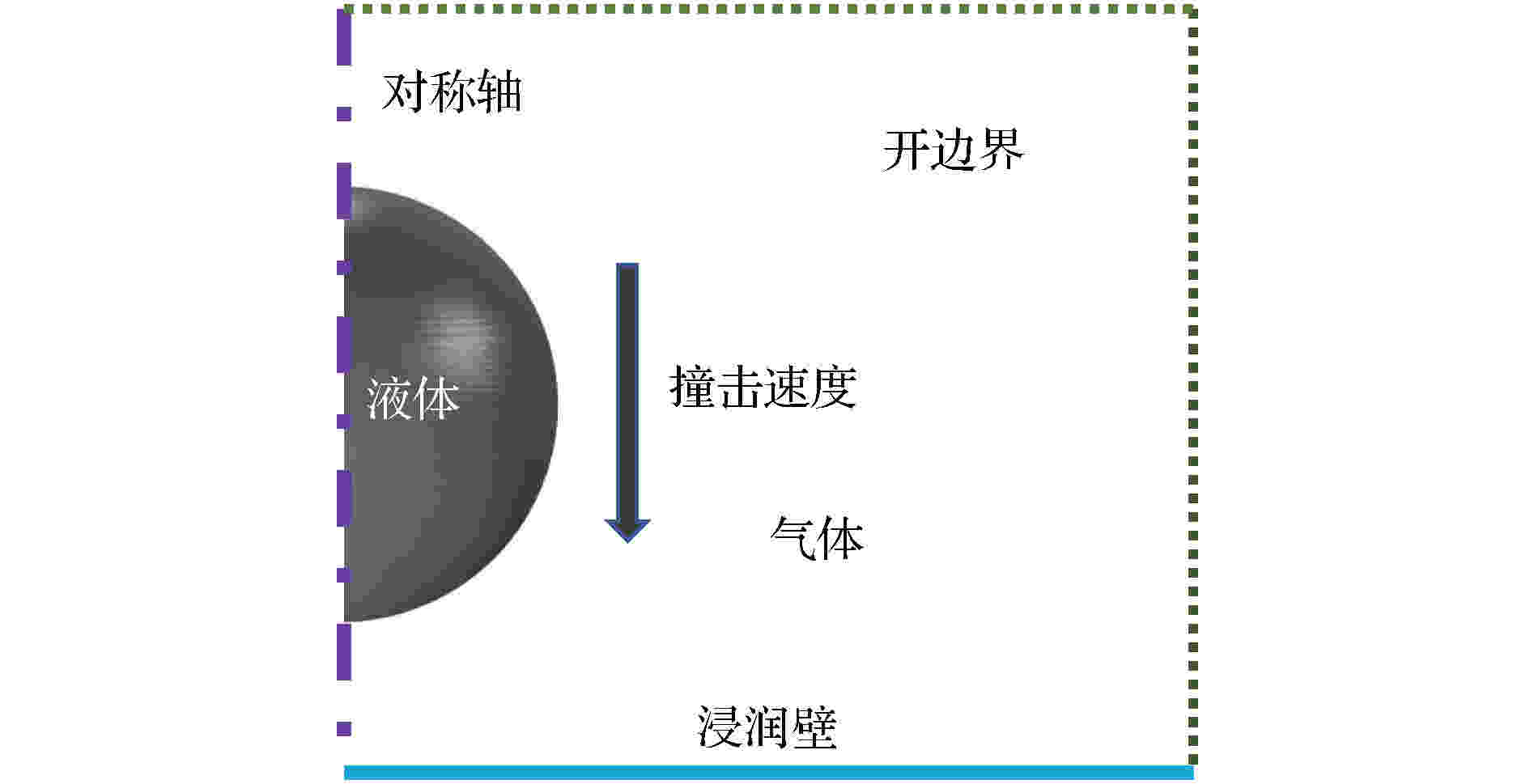 图 1 数值模拟计算域设置
图 1 数值模拟计算域设置Figure1. Computation domain for numerical simulation.
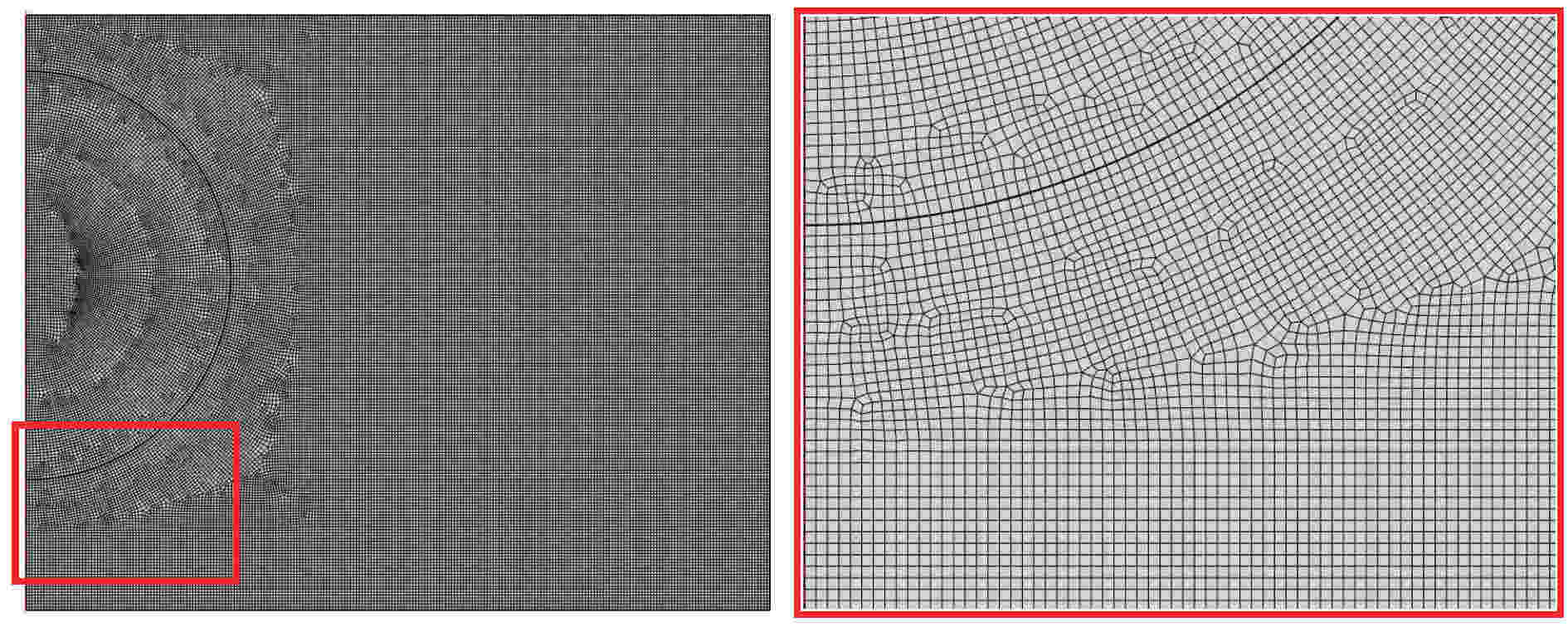 图 2 计算域网格剖分
图 2 计算域网格剖分Figure2. Grid generation of computation domain.
为了系统地分析各因素对液滴撞击固体壁面后铺展行为的影响, 本文引入如下的无量纲参数讨论液滴的撞击铺展结果, 包括韦伯数









为了验证数值模型的准确性, 基于建立的数值模型, 首先模拟了纯水液滴撞击固体壁面的情况, 并将数值计算结果与Lim等[33]的数值计算结果进行了对比验证. 模拟的相关参数设置见表1, 分析图3中液滴撞击固体壁面后无量纲直径随无量纲时间的变化, 可以发现本文的模拟结果与Lim等[33]的模拟结果的误差较小(误差

| 参数 | 符号/单位 | 数值 |
| 重新初始化参数 | $\gamma /{\rm{m}} \cdot {{\rm{s}}^{ - 1}}$ | 1 |
| 界面厚度 | $\varepsilon /\text{μm}$ | $5 \times {10^{ - 2}}$ |
| 气体密度 | ${\rho _1}/{\rm{kg}} \cdot {{\rm{m}}^{ - {\rm{3}}}}$ | 1.2 |
| 气体黏度 | ${\eta _1}{\rm{/Pa}} \cdot {\rm{s}}$ | $2 \times {10^{ - 5}}$ |
| 液体密度 | ${\rho _2}/{\rm{kg}} \cdot {{\rm{m}}^{ - {\rm{3}}}}$ | 1000 |
| 液体黏度 | ${\eta _2}{\rm{/Pa}} \cdot {\rm{s}}$ | $8.9 \times {10^{ - 4}}$ |
| 温度 | T/℃ | 25 |
| 液滴初始直径 | ${D_0}/{\text{μ} m }$ | 55 |
| 液滴撞击速度 | uz$/{\rm{m}} \cdot {{\rm{s}}^{ - 1}}$ | 2.45 |
| 接触角 | $\theta /{(^ \circ })$ | 55 |
| 气液界面张力 | $\sigma /{\rm{mN}} \cdot {{\rm{m}}^{ - 1}}$ | 72.8 |
表1数值模拟参数设置
Table1.Symbols and constants in numerical simulation
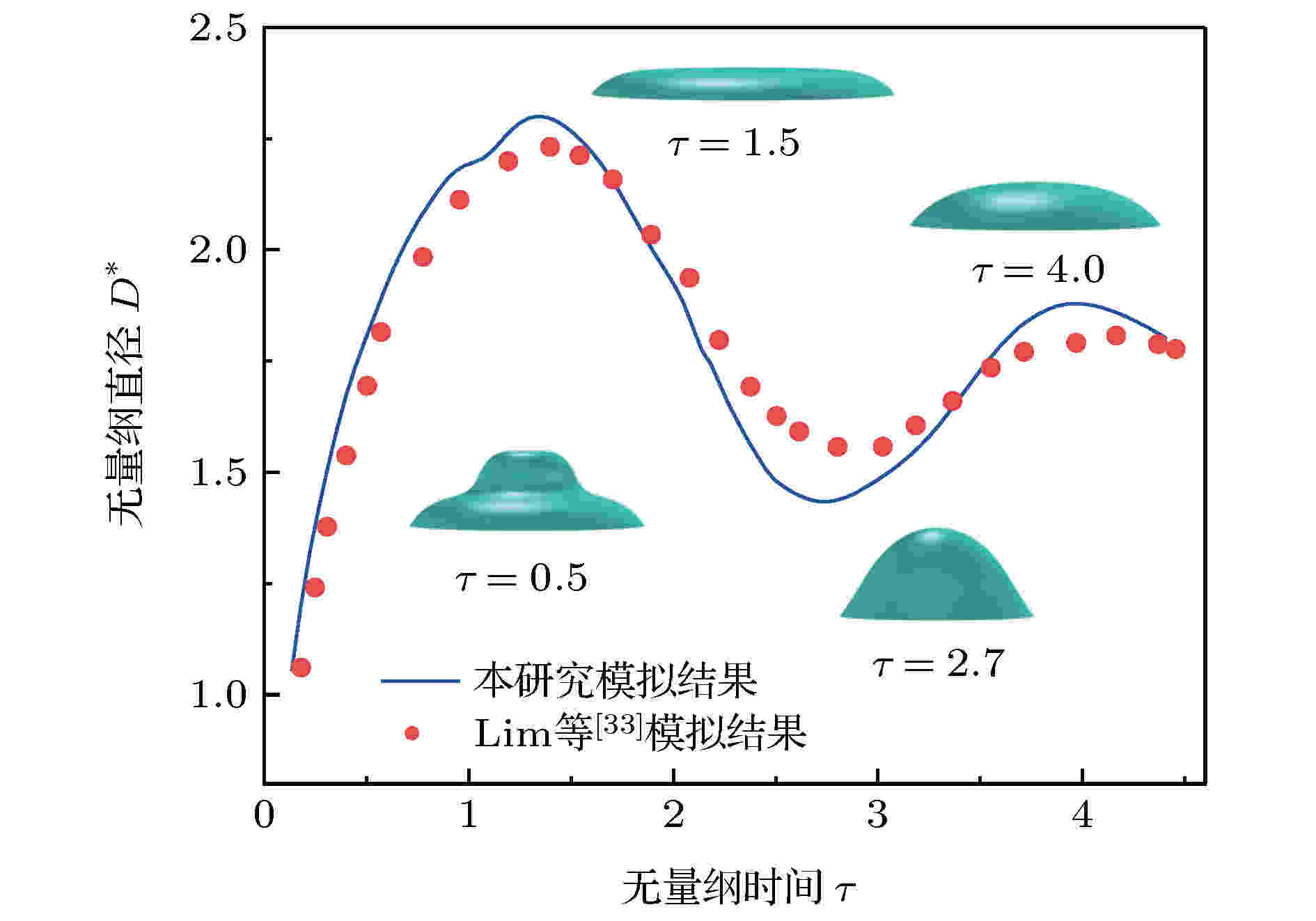 图 3 本文数值模拟与Lim等[33]相场模拟的结果比较
图 3 本文数值模拟与Lim等[33]相场模拟的结果比较Figure3. Comparisons between simulation results in this work and phase-field simulation results[33].
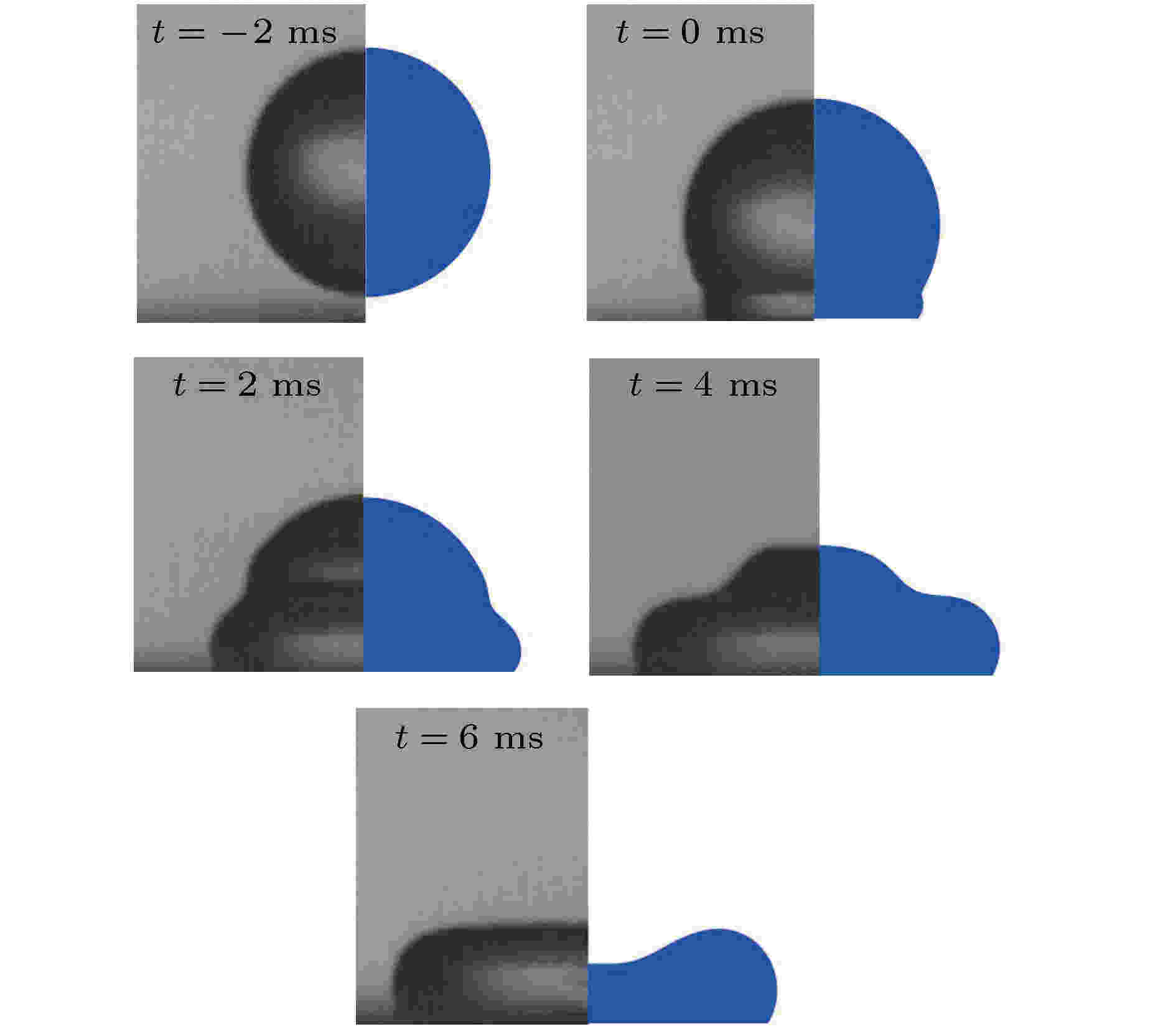 图 4 本文数值模拟与German等[11]的实验结果比较(左侧为实验结果, 右侧为模拟结果)
图 4 本文数值模拟与German等[11]的实验结果比较(左侧为实验结果, 右侧为模拟结果)Figure4. Comparisons between numerical simulation in this work and experiment results[11], the left half of each image is obtained from the experiment, while the right half is the snapshots from our simulation.
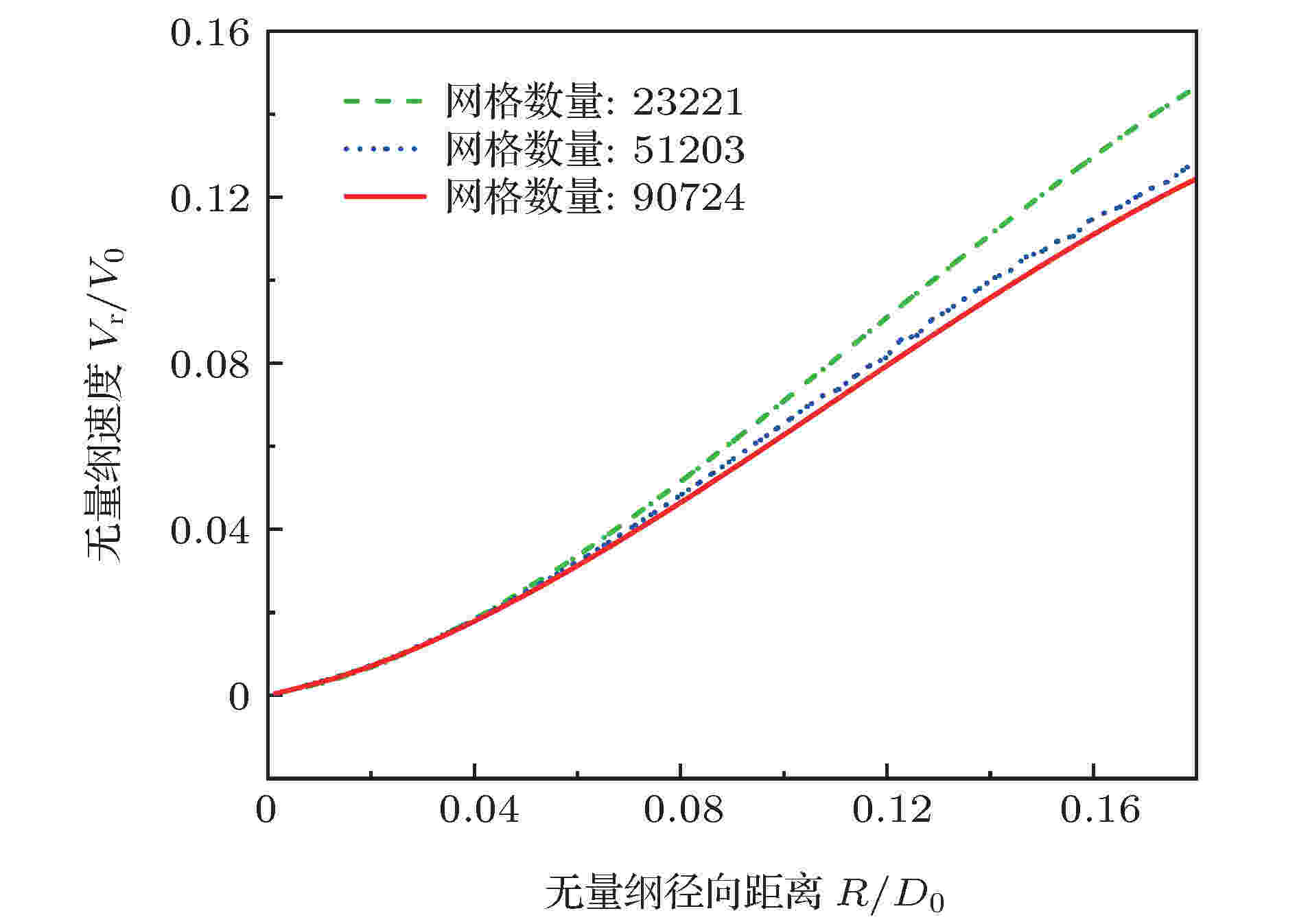 图 5 液滴撞击壁面的网格收敛性验证
图 5 液滴撞击壁面的网格收敛性验证Figure5. Mesh convergence study of droplet impact on solid surfaces
3.1.剪切变稀特性的影响
为了研究剪切变稀特性对液滴撞击固体壁面后铺展行为的影响, 在不改变表1中除黏度以外参数的情况下, 对比研究了牛顿流体液滴和三种表现出不同剪切变稀程度液滴的撞击壁面行为. 图6为模拟研究中不同幂律指数流体剪切黏度随剪切速率的变化, 稠度系数和幂律指数的具体数值选择参考了Lindner等[34]对黄原胶稀溶液的流变学研究. 由幂律模型的本构关系可知在低剪切速率时, 其剪切黏度会趋近一个无穷大的值, 所以本文在剪切速率为
 图 6 不同幂律指数流体剪切黏度随剪切速率的变化
图 6 不同幂律指数流体剪切黏度随剪切速率的变化Figure6. Variation of shear viscosity with shear rate at different power-law index.
从图7和图8可以发现, 对于表现出剪切变稀特性的液滴, 当m较小时它的铺展速度更快(更大的斜率), 但由于其在壁面上的铺展直径更大, 所以达到最大铺展的时间仍随着m减小而增大. 虽然铺展直径的增大会导致液滴与壁面间的摩擦能量耗散增加, 但从铺展直径的变化曲线可以看出, 黏性耗散在此过程中起着更大的影响. 液滴达到最大铺展直径后的回缩阶段已经不受惯性力的影响, 此时主导液滴运动的主要是表面张力和液滴黏性力, 同样由于剪切变稀特性的存在, 液滴的回缩速度更快 (更大斜率绝对值).
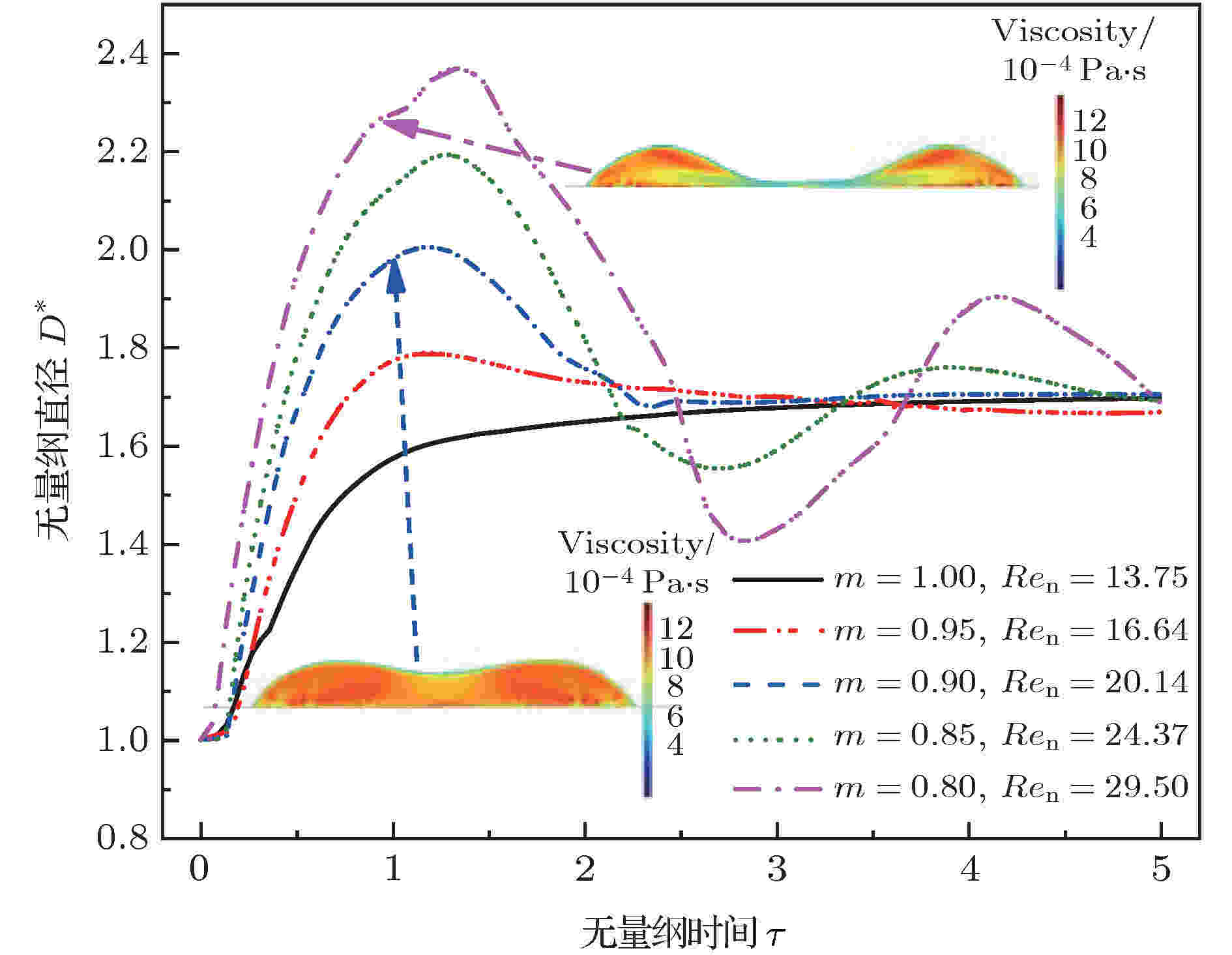 图 7 不同幂律指数时无量纲直径随无量纲时间的变化(We = 4.53)
图 7 不同幂律指数时无量纲直径随无量纲时间的变化(We = 4.53)Figure7. Dimensionless diameter of droplet spread varying with dimensionless time at different power-law index (We = 4.53).
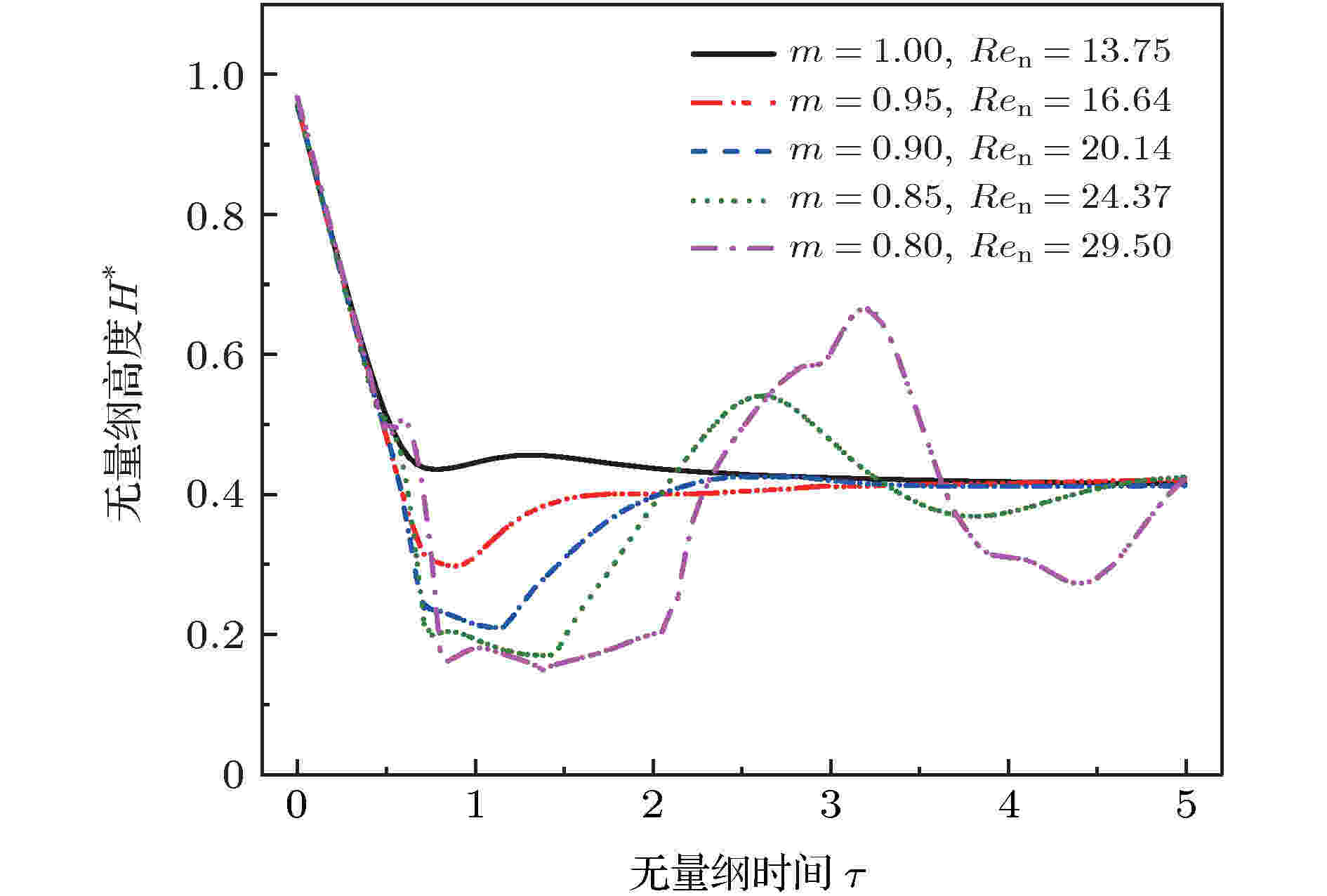 图 8 不同幂律指数时无量纲高度随无量纲时间的变化(We = 4.53)
图 8 不同幂律指数时无量纲高度随无量纲时间的变化(We = 4.53)Figure8. Dimensionless height of droplet spread varying with dimensionless time at different power-law index (We = 4.53).
在

图9对比了m = 0.85和0.80的液滴撞击壁面(接触角为55°)时液滴形貌与速度矢量随时间的变化情况.

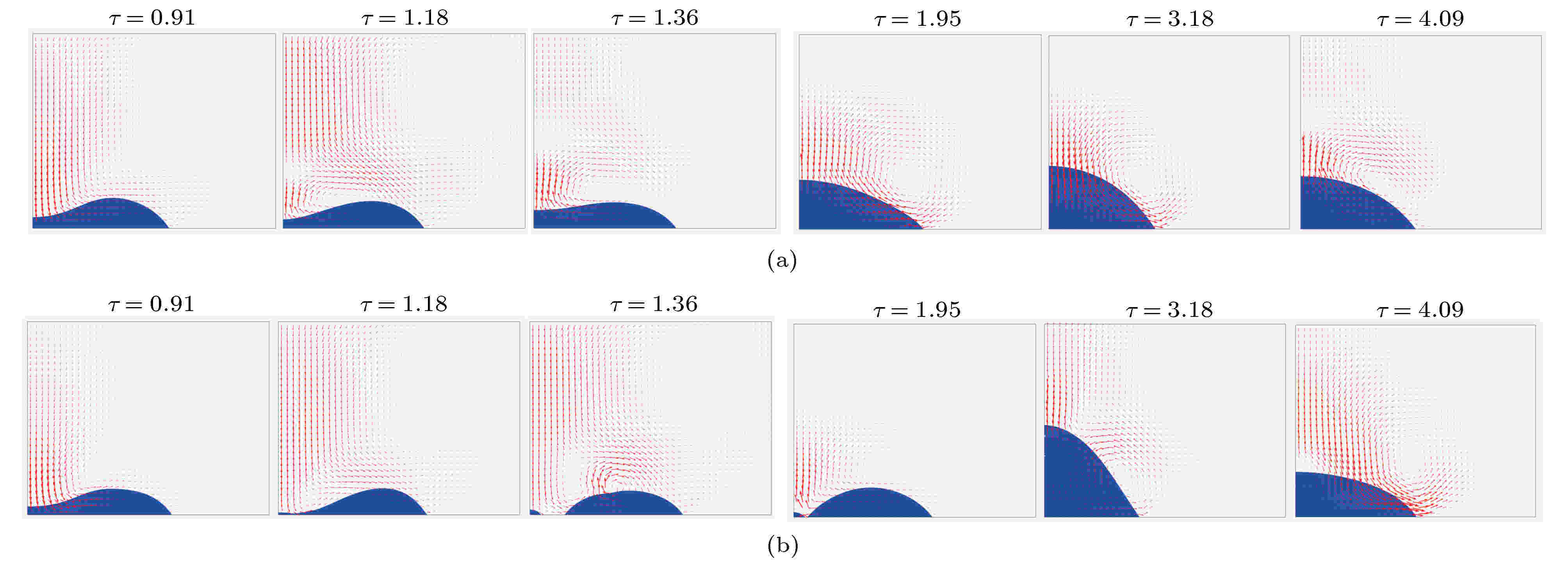 图 9 不同幂律指数时液滴撞击壁面过程 (a) m = 0.85, Ren = 24.37, We = 4.53; (b) m = 0.80, Ren = 29.50, We = 4.53
图 9 不同幂律指数时液滴撞击壁面过程 (a) m = 0.85, Ren = 24.37, We = 4.53; (b) m = 0.80, Ren = 29.50, We = 4.53Figure9. Process of droplet impact on surface at different power-law index: (a) m = 0.85, Ren = 24.37, We = 4.53; (b) m = 0.80, Ren = 29.50, We = 4.53.
2
3.2.壁面浸润性的影响
液滴撞击壁面后的铺展行为被气液固三相耦合作用, 固体壁面的浸润性直接影响着壁面与液滴间力的相互作用. 通常采用接触角衡量壁面的浸润程度, 3.1节中已经研究了接触角为55°情况下液滴撞击固体壁面时的动力学行为, 为了研究壁面浸润性对液滴撞击壁面后铺展行为的影响, 继续模拟了壁面接触角分别设置为100°和160°时液滴撞击固体壁面的行为, 探讨壁面浸润性对牛顿流体液滴和剪切变稀液滴撞击壁面行为的影响差异, 图10和图11为数值计算结果的分析图.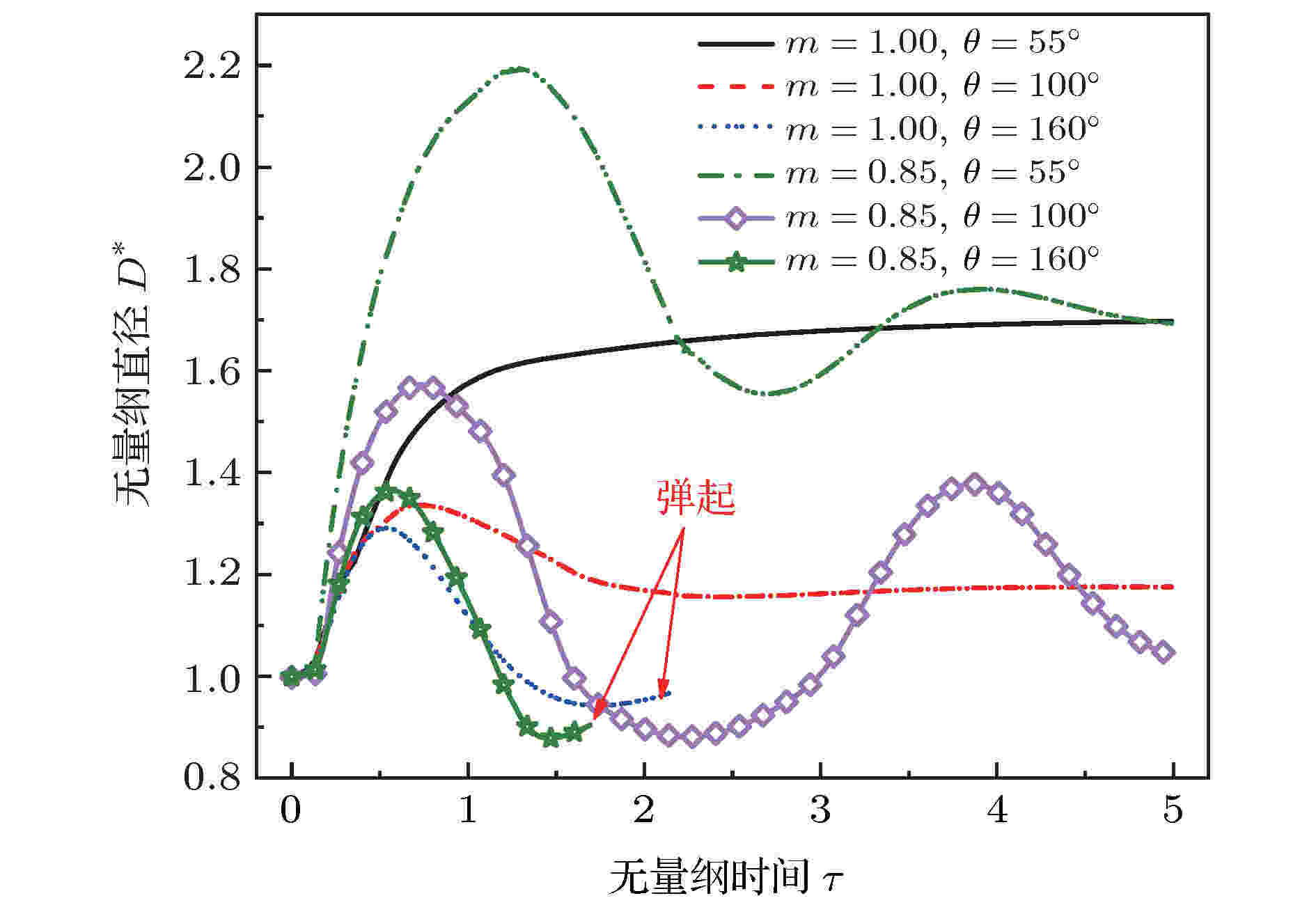 图 10 不同幂律指数时无量纲直径随无量纲时间的变化(We = 4.53, Ren = 13.75 (m = 1.00), Ren = 24.37 (m = 0.85))
图 10 不同幂律指数时无量纲直径随无量纲时间的变化(We = 4.53, Ren = 13.75 (m = 1.00), Ren = 24.37 (m = 0.85))Figure10. Dimensionless diameter of droplet spread varying with dimensionless time at different power-law index (We = 4.53, Ren = 13.75 (m = 1.00), Ren = 24.37 (m = 0.85))
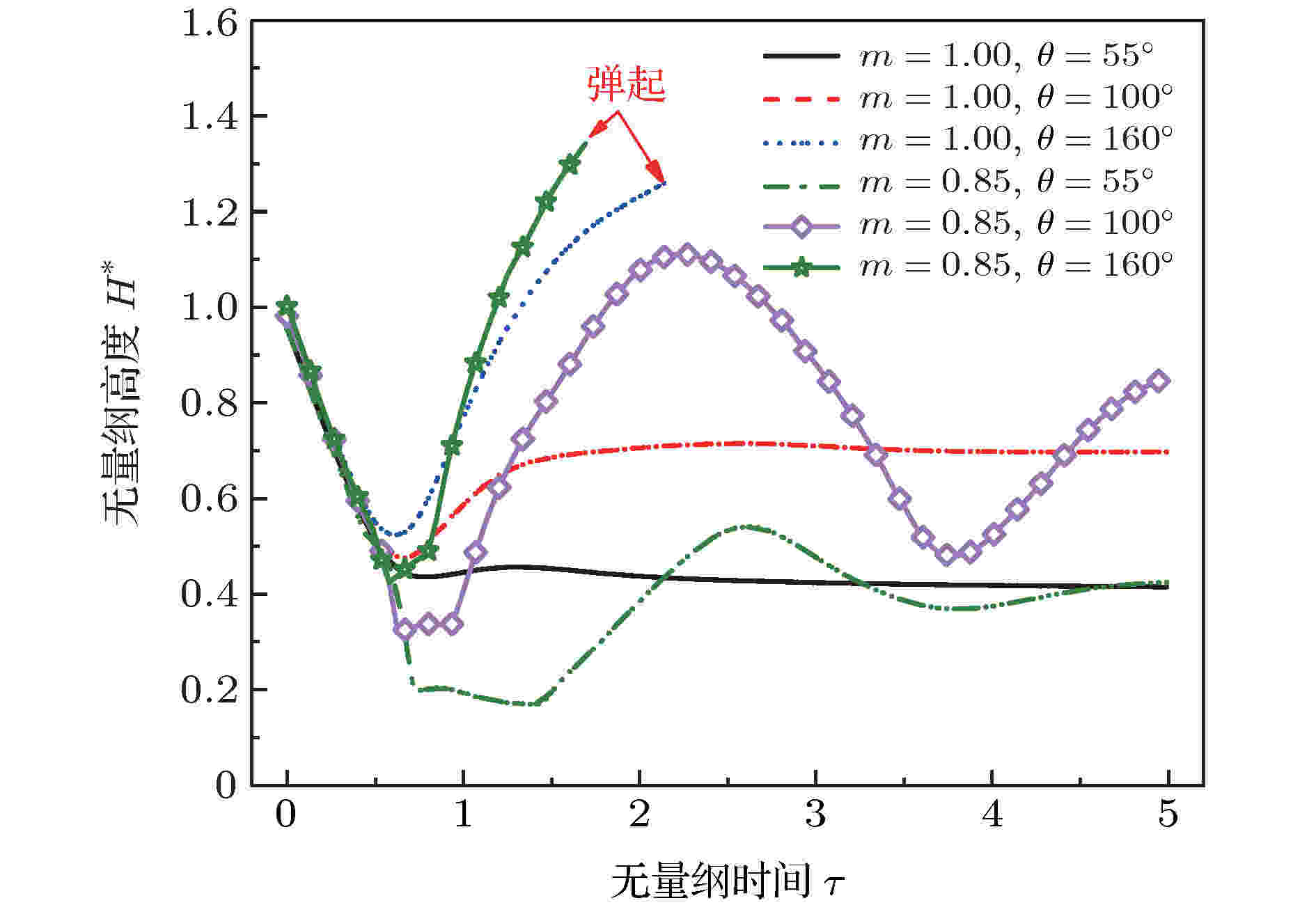 图 11 不同幂律指数时无量纲高度随无量纲时间的变化(We = 4.53, Ren = 13.75 (m = 1.00), Ren = 24.37 (m = 0.85))
图 11 不同幂律指数时无量纲高度随无量纲时间的变化(We = 4.53, Ren = 13.75 (m = 1.00), Ren = 24.37 (m = 0.85))Figure11. Dimensionless height of droplet spread varying with dimensionless time at different power-law index (We = 4.53, Ren = 13.75 (m = 1.00), Ren = 24.37 (m = 0.85)).
从图10和图11可以看出, 随着壁面浸润性的减小 (接触角增大), 液滴撞击壁面后的最大无量纲直径增大, 但壁面浸润性对剪切变稀液滴的最大无量纲直径影响更为显著. 接触角为55°情况下, 牛顿流体液滴撞击壁面时, 液滴在达到最大铺展后基本不表现出回缩行为; 接触角为100°时液滴撞击壁面后铺展范围减小, 与壁面摩擦导致的能量耗散较小, 达到最大铺展后, 液滴的表面张力和壁面力驱使液滴回缩, 但此时并未弹起. 接触角为160°时, 液滴撞击过程中的摩擦耗散能量继续减少, 由(11)式可知壁面对液滴的作用力继续增大, 液滴最终在回缩过程中弹起.
图12(a)给出了接触角为160°时牛顿流体液滴撞击壁面过程中内部速度矢量随无量纲时间的变化. 在液滴的撞击瞬间, 液滴上部的速度几乎与撞击前一致, 此时在液滴近壁中心处的速度接近于零, 在液滴近壁边缘处则会产生较大的横向速度. 随着液滴在壁面上的铺展, 液滴边缘的横向速度逐渐减小, 液滴达到最大铺展时, 液滴边缘的横向速度减小为零. 在表面张力的作用下, 液滴开始回缩, 此时液滴近壁中心处的速度依然接近于零, 液滴上部的速度矢量方向向下, 但液滴边缘出现指向液滴中心的速度 (τ = 0.64), 这导致此时液滴内部出现了较小的速度环流. 随着液滴的回缩, 液滴横向回缩速度逐渐增大, 在液滴即将脱离壁面回弹起的时刻, 近壁中心处的横向速度达到最大值, 液滴脱离壁面后内部基本不存在径向的速度分量. 图12(b)为剪切变稀液滴撞击壁面过程中内部速度矢量分布的变化情况, 剪切变稀液滴撞击壁面后其内部的速度矢量分布变化与牛顿流体基本一致, 但由于流体的剪切变稀特性, 液滴铺展过程中的黏性耗散小于牛顿流体液滴, 黏性耗散的减少使得更多的惯性能量转化为表面能量, 在表面张力的驱使下液滴回缩的速度更快, 液滴弹起壁面的时间略早于牛顿流体液滴, 最终回弹高度也略高.
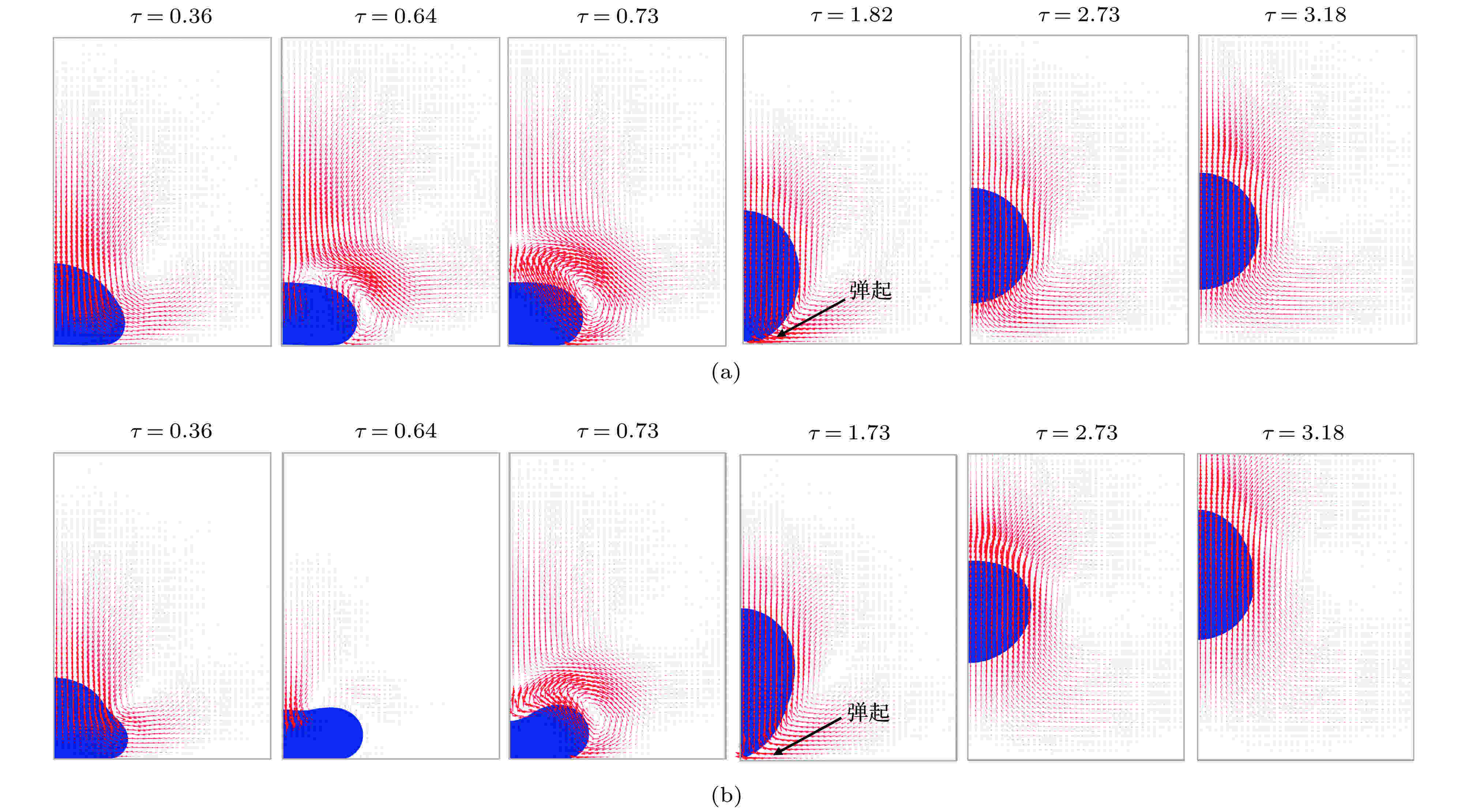 图 12 不同幂律指数时液滴撞击壁面过程 (a) m = 1, Ren = 13.75, We = 4.53; (b) m = 0.80, Ren = 29.50, We = 4.53
图 12 不同幂律指数时液滴撞击壁面过程 (a) m = 1, Ren = 13.75, We = 4.53; (b) m = 0.80, Ren = 29.50, We = 4.53Figure12. Process of droplet impact on surface at different power-law index: (a) m = 1, Ren = 13.75, We = 4.53; (b) m = 0.80, Ren = 29.50, We = 4.53.
2
3.3.最大无量纲直径预测模型
液滴撞击壁面后无量纲直径的最大值




| 模型出处 | 方程 | 均方根误差 |
| Jones[37] | $D_{\max }^* = {({\rm{4/3} }Re_{\rm{n} } ^{1/4})^{1/2} }$ | 0.20 |
| Madejski[38] | $D_{\max }^* = Re_{\rm{n} } ^{1/5}$ | 0.31 |
| Pasandideh-Fard等[39] | $D_{\max }^* = 0.5 Re_{\rm{n} } ^{1/4}$ | 0.64 |
| Scheller和Bousfield[40] | $D_{\max }^* = 0.61{(R{e_{\rm{n}}}W{e^{1{\rm{/}}2}}{\rm{)}}^{0.166}}$ | 0.65 |
| Roisman[41] | $D_{\max }^* = 0.87 Re_{\rm{n} } ^{1/5} - {\rm{0} }{\rm{.40} }Re_{\rm{n} }^{2/5}W{e^{ - 1/2} }$ | 0.97 |
| Luu和Forterre[8] | $D_{\max }^* = Re_{\rm{n} } ^{1/(2 m + 3)}$ | 0.44 |
| Andrade等[14] | $D_{\max }^* = 1.28 + 0.071 W{e^{1/4} }Re_{\rm{n} } ^{1/4}$ | 0.43 |
| 本文预测模型 | $D_{\max }^* = Re_{\rm{n} } ^{0.17} = {\left[ {\rho D_0^mV_0^{2 - m}/k} \right]^{0.17} }$ | 0.06 |
表2最大无量纲直径预测模型
Table2.Prediction models of maximum dimensionless factor.
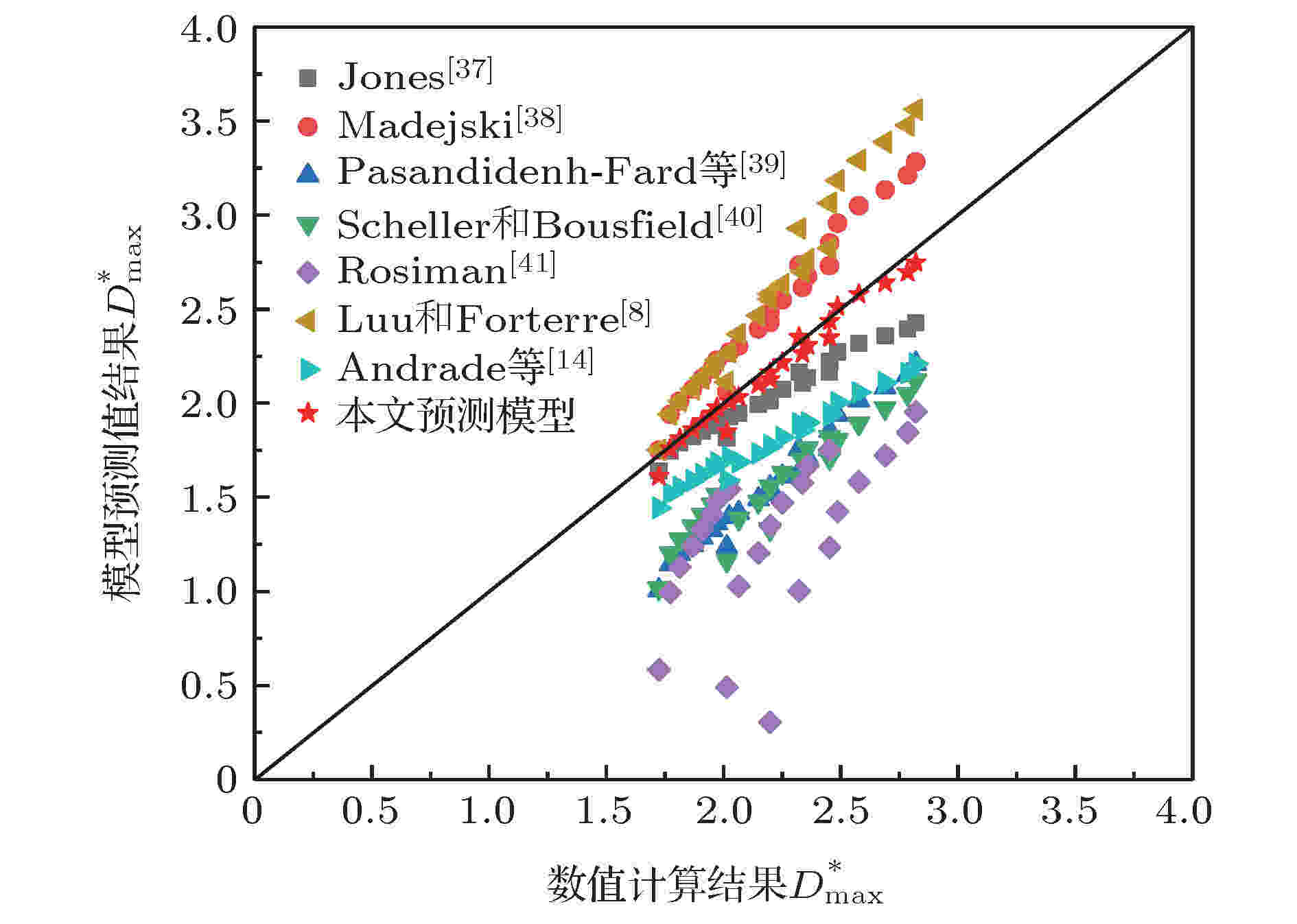 图 13 最大无量纲直径模型预测值与数值计算值对比
图 13 最大无量纲直径模型预测值与数值计算值对比Figure13. Comparison of

1)液滴撞击壁面的过程中, 剪切变稀液滴内部剪切速率的改变使液滴的黏度动态变化. 幂律指数m较小的液滴, 液滴形貌变化更为显著. 在接触角为55°时液滴撞击壁面的情况下, 当幂律指数m小于0.85时, 液滴撞击壁面后开始表现出振荡行为, 当幂律指数m小于0.80时, 液滴撞击壁面过程中出现内部液膜断裂的情况.
2)壁面浸润性对剪切变稀液滴撞击壁面行为的影响更为显著, 在接触角为100°时液滴撞击壁面情况下, m = 0.85的剪切变稀流体表现出区别与牛顿流体的振荡行为. 当接触角为160°时, 牛顿流体液滴和剪切变稀液滴撞击壁面时均会弹起壁面, 但因黏性耗散较小, 剪切变稀液滴弹起的速度更快.
3)基于数值计算结果和前人的经典黏性耗散模型, 本文提出了接触角为55°时剪切变稀液滴撞击壁面后最大无量纲直径的预测模型, 模型预测结果与本文的数值计算结果取得了较高的一致性.
